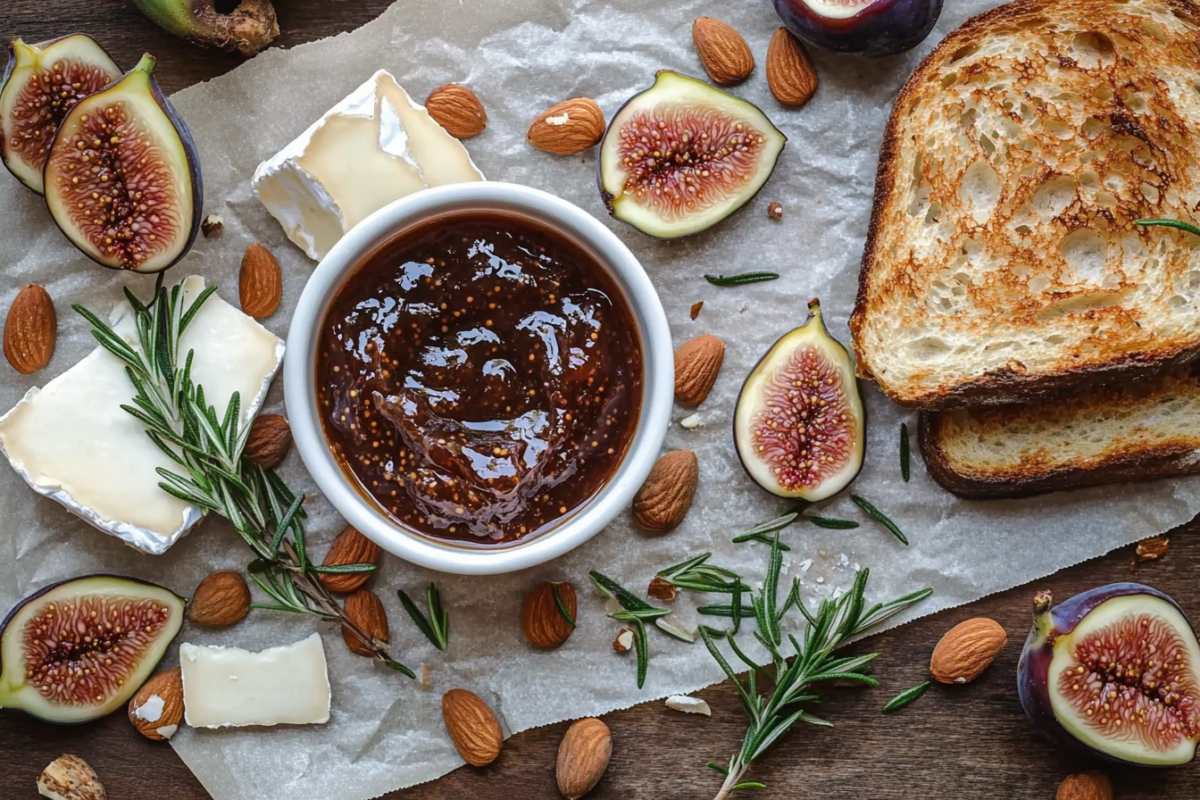Introduction Fig and Ginger Jam
Fig and ginger jam, a delightful fusion of sweet and spicy flavors, has charmed taste buds worldwide. This versatile spread not only elevates simple snacks but also serves as a creative ingredient in countless dishes. Whether you’re new to homemade jams or a seasoned preserver, this guide takes you through every aspect of fig and ginger jam. From understanding its nutritional benefits to crafting the perfect batch at home, let’s dive into this world of delectable sweetness and unleash your culinary creativity.
Table of Contents
What is Fig and Ginger Jam?
Fig and ginger jam is a classic preserve that effortlessly combines the natural sweetness of ripe figs with ginger’s warm, spicy kick. As a result, it has become a favorite in culinary traditions across the globe, especially in kitchens seeking to balance bold flavors.
At its core, fig and ginger jam exemplifies the art of preservation. Not only do figs, with their luscious texture and subtle sweetness, shine in this combination, but they also pair beautifully with the earthy warmth of ginger. Together, these ingredients create a jam ideal for sweet and savory applications.
The Popularity of Fig and Ginger Jam
Fig and ginger jam has surged in popularity for several reasons. To begin with, it’s incredibly versatile. For instance, you can spread it on toast for breakfast, use it as a glaze for roasted dishes, or pair it with cheese for a gourmet treat.
Moreover, its unique flavor profile aligns perfectly with modern culinary trends emphasizing bold, natural flavors. In addition, people increasingly value homemade and artisanal products, and fig and ginger jam check both boxes. Beyond its taste, the jam appeals to those seeking healthier alternatives to store-bought spreads laden with artificial ingredients.
The health benefits of figs further amplify their charm, highlighting their fiber-rich, nutrient-dense properties. This not only makes fig and ginger jam a delicious treat but also a smart and health-conscious choice.
Figs: A Nutritional Powerhouse
Figs are more than just delicious fruits; they’re nutrient-packed gems with a long culinary and medicinal use history. Packed with dietary fiber, vitamins, and minerals, they provide a robust base for jams. Fungs shine in flavor and nutrition when paired with bold ingredients like ginger.
Nutritional Profile of Figs
Figs are naturally sweet but surprisingly healthy. Packed with essential nutrients, they offer a boost of calcium, magnesium, and potassium. These minerals promote bone health, regulate blood pressure, and support muscle function. Moreover, the fruit contains antioxidants like polyphenols, which help combat oxidative stress and inflammation.
Fresh figs contain less sugar than many might think, while dried figs offer a concentrated energy source, making them ideal for jam recipes. The combination of fig and ginger jam brings a perfect balance of natural sweetness and spice.
Health Benefits of Figs
Figs’ high fiber content aids digestion, making this fruit a go-to for improving gut health. They’re also known for promoting heart health due to their ability to reduce LDL cholesterol. Figs may also help control blood sugar levels, making fig-based jams a smarter choice than overly processed alternatives.
Varieties of Figs for Jam-Making
When crafting fig and ginger jam, selecting the right type of fig is crucial. Popular choices include:
- Mission Figs: Known for their deep purple color and rich flavor.
- Kadota Figs: Pale and less sweet, perfect for balancing stronger spices.
- Calimyrna Figs: Large and nutty, offering a unique texture to jams.
Your variety will impact the final flavor profile, so experiment with what works best for your palate.
Ginger: The Spice with a Kick
Ginger is the unsung hero of fig and ginger jam, adding a distinctive zing that complements the sweetness of figs. Its vibrant aroma and health benefits make it a perfect addition to any jam recipe.
Nutritional Profile of Ginger
Ginger is a nutritional powerhouse, boasting vitamins like B6 and minerals such as magnesium. It’s also rich in gingerol, a bioactive compound responsible for its anti-inflammatory and antioxidant effects.
Unlike sugar-laden additives in many store-bought jams, fresh ginger contributes to the jam’s depth of flavor while offering significant health perks.
Health Benefits of Ginger
Adding ginger to jam isn’t just about flavor but wellness. Ginger is renowned for aiding digestion, reducing nausea, and alleviating muscle pain. Moreover, it can help lower blood sugar levels and cholesterol, making it a heart-healthy addition to your diet.
For those wary of overly sweet spreads, including ginger adds complexity while balancing the natural sugars of figs.
The Role of Ginger in Enhancing Flavor
The spicy, slightly sweet notes of ginger cut through the richness of figs, creating a complex yet harmonious jam. Whether you prefer freshly grated ginger’s sharpness or crystallized ginger’s mellow warmth, this ingredient ensures your fig and ginger jam is anything but ordinary.
Read more about the health benefits of ginger to appreciate why it’s a star ingredient in this delicious spread.
Selecting the Right Ingredients
When crafting a homemade fig and ginger jam, ingredient selection is not just important, it’s critical. Let’s dive into how to pick the freshest figs and the best ginger for an irresistible batch of jam, empowering you with the knowledge to create a truly delicious and high-quality product.
Choosing Fresh Figs and Ginger
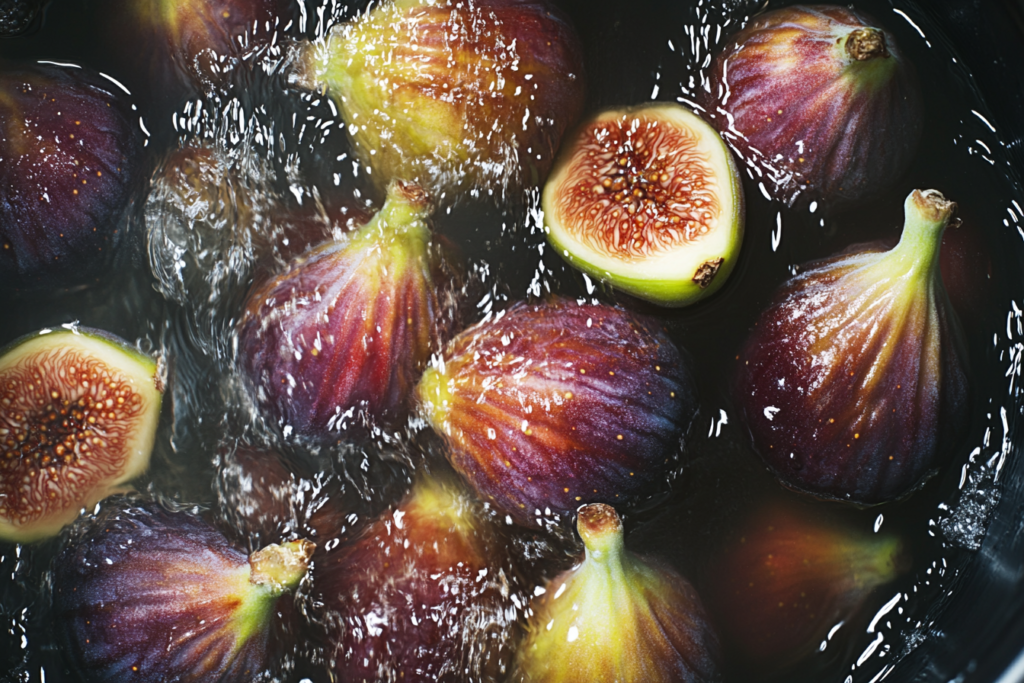
Freshness is key to creating a flavorful jam. For figs, look for ones that are plump, soft, and free of bruises. Overripe figs can work well for jams since their natural sugars are at their peak.
As for ginger, opt for firm, smooth roots with a bright, spicy aroma. Avoid pieces that appear shriveled or have soft spots, as they may lack the punchy flavor needed to elevate your jam.
Considerations for Organic and Locally Sourced Produce
Use organic figs and ginger to reduce exposure to pesticides and chemicals whenever possible. Locally sourced produce often provides fresher ingredients and supports sustainable farming practices. Knowing where your food comes from adds a personal connection to your homemade jam.
Equipment Needed for Jam Preparation
Creating fig and ginger jam at home doesn’t require fancy equipment, but having the right tools makes the process smoother.
Essential Tools and Utensils
- Heavy-Bottomed Saucepan: Ensures even cooking and prevents burning.
- Wooden Spoon: Ideal for stirring thick mixtures like jam.
- Citrus Juicer: Useful if you’re adding lemon juice to balance the sweetness.
- Candy Thermometer: Helps you reach the perfect setting temperature.
- Ladle and Funnel: For transferring jam into jars without making a mess.
Sterilization of Jars and Storage Tips
Proper sterilization is crucial to extend the shelf life of your jam. Start by washing jars in hot, soapy water, then sterilize them by boiling for 10 minutes. Ensure the jars are completely dry before filling them. Store sealed jars in a cool, dark place to keep your fig and ginger jam fresh for months.
Step-by-Step Recipe for Fig and Ginger Jam
Making fig and ginger jam at home is a rewarding experience that fills your kitchen with warm, inviting aromas. This step-by-step recipe ensures you achieve the perfect texture and flavor every time.

Ingredients
- 2 pounds fresh figs, chopped
- 1/2 cup freshly grated ginger
- 2 cups granulated sugar (or an alternative sweetener like honey or coconut sugar)
- 1/4 cup lemon juice
- 1/2 cup water
Preparation Steps
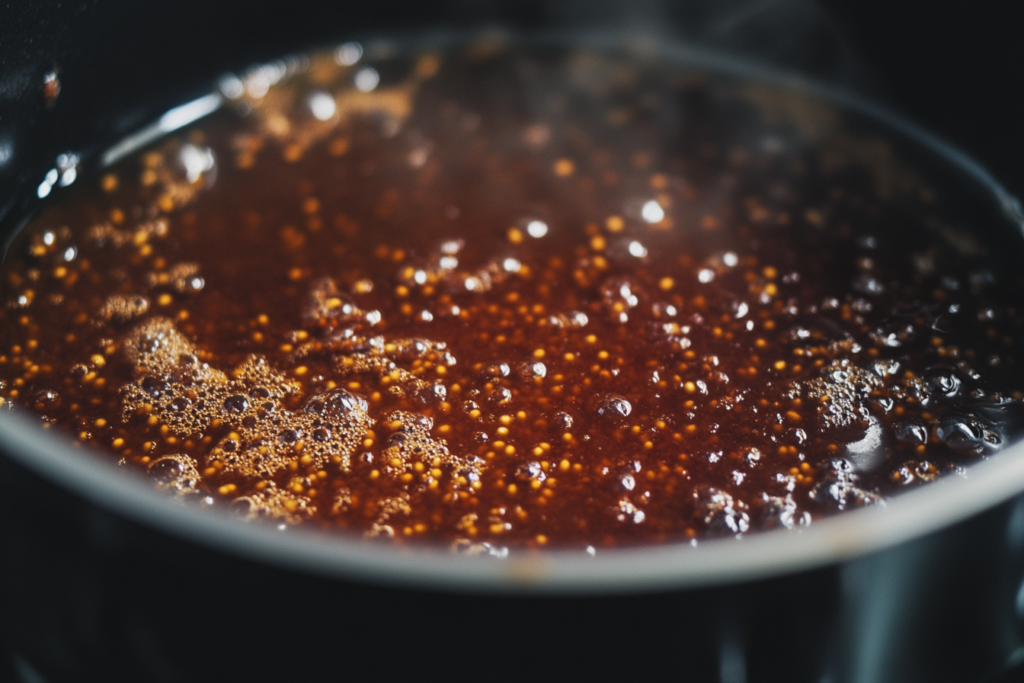
- Prepare the Figs:
- Wash the figs thoroughly and remove the stems. Chop them into small pieces, leaving the skin on for added texture and nutrients.
- Cook the Mixture:
- Combine the chopped figs, grated ginger, sugar, lemon juice, and water in a heavy-bottomed saucepan. Stir well to mix the ingredients evenly.
- Simmer and Stir:
- Bring the mixture to a gentle boil over medium heat. Reduce the heat and let it simmer for 30–40 minutes, stirring occasionally to prevent sticking.
- Check for Consistency:
- A candy thermometer ensures the mixture reaches 220°F (the setting point). Alternatively, spoon a small amount onto a chilled plate; if it wrinkles when pushed, it’s ready.
- Jar the Jam:
- Remove the saucepan from the heat and let the jam cool slightly. Carefully ladle it into sterilized jars, leaving about 1/4 inch of headspace. Seal the jars tightly.
- Process the Jars:
- Process the jars in a water bath for long-term storage for 10 minutes. Otherwise, refrigerate and consume within a few weeks.
This recipe produces a luscious jam that balances the natural sweetness of figs with the spicy warmth of ginger—a treat worth the effort!
Creative Variations of Fig and Ginger Jam
While the classic fig and ginger jam recipe is delightful, experimenting with additional ingredients can elevate the flavor profile. Here are some creative variations to try.
Incorporating Additional Flavors
- Vanilla Bean: Add a split vanilla bean during cooking for a subtle, creamy sweetness.
- Cinnamon: Sprinkle in a teaspoon of ground cinnamon for a cozy, spiced twist.
- Orange Zest: Brighten the jam with citrus zest for a tangy contrast.
Adjusting Sweetness Levels
For those who prefer less sweetness, consider using natural alternatives like honey, maple syrup, or coconut sugar. You can also reduce the amount of sugar entirely, relying on the figs’ natural sugars to sweeten the jam.
Experimenting with Textures
- Use an immersion blender to puree the mixture for a smoother jam during cooking.
- To create a chunkier spread, cut the figs into larger pieces and cook them less to retain some firmness.
By tailoring these variations to your taste, you can create a jam that’s uniquely yours, perfect for sharing or gifting.
Delicious Pairings with Fig and Ginger Jam
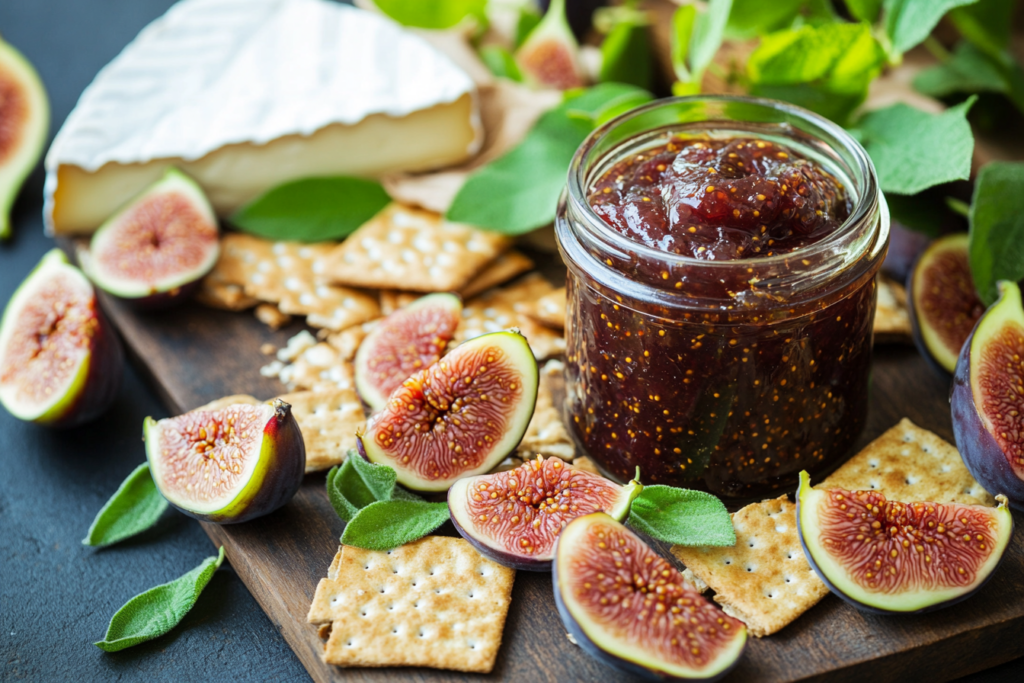
Fig and ginger jam isn’t just a spread—it’s a versatile ingredient that can transform simple dishes into gourmet delights. Here are some delicious pairing ideas to inspire your culinary adventures.
With Cheeses and Crackers
One of the most popular uses for fig and ginger jam is as an accompaniment to cheese boards. Its sweet and spicy notes pair beautifully with the following:
- Brie: The creaminess of brie complements the jam’s richness.
- Goat Cheese: The tanginess of goat cheese balances the jam’s sweetness.
- Aged Cheddar: A robust cheddar highlights the depth of ginger.
Serve the jam alongside crackers or crusty bread for a sophisticated appetizer.
On Breakfast Dishes
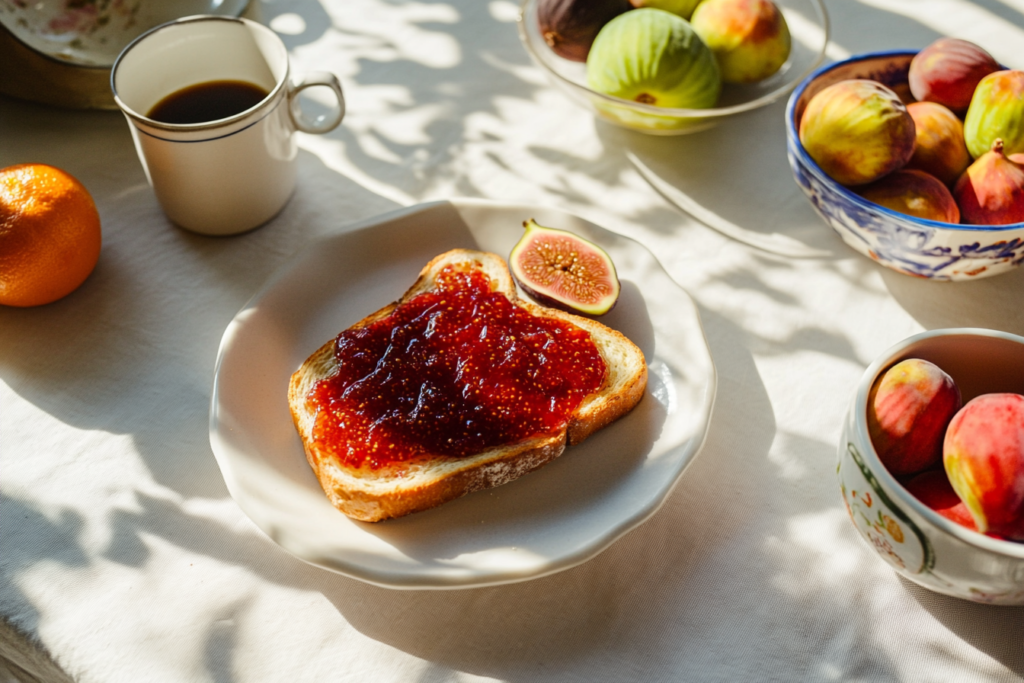
Elevate your morning routine with a dollop of fig and ginger jam:
- Spread it on toast, pancakes, or waffles.
- Swirl it into yogurt or oatmeal for added flavor.
In Savory Dishes
Don’t limit this jam to sweet applications—it works wonders in savory recipes, too:
- Glazes: Use it as a glaze for roasted chicken or pork.
- Sandwiches: Add it to turkey or ham sandwiches for a sweet-savory contrast.
- Stuffings: Incorporate it into stuffing or couscous for a gourmet touch.
Health Benefits and Nutritional Information
Fig and ginger jam isn’t just a treat for your taste buds—it’s also packed with nutritional benefits that make it a smart choice for health-conscious food lovers.
Caloric Content and Macronutrient Breakdown
A standard serving of fig and ginger jam (1 tablespoon) typically contains:
| Calories | 50–60 |
| Carbohydrates | 13–15 grams |
| Sugars | 10–12 grams |
| Fat and Protein | Negligible |
The jam’s natural sugars from figs and the optional use of alternative sweeteners make it a healthier option than store-bought spreads.
Potential Health Benefits
- Fiber Boost: This jam supports digestion and promotes gut health thanks to figs.
- Anti-Inflammatory Properties: Ginger adds powerful anti-inflammatory compounds, aiding in overall wellness.
- Vitamin C: The lemon juice used in the recipe adds a dose of immunity-boosting Vitamin C.
While moderation is key due to its sugar content, the jam offers a healthier, more flavorful alternative to processed spreads.
Proper Storage and Shelf Life of Homemade Jam
Proper storage is key to savoring your fig and ginger jam.
Storage Tips for Freshness
- Keep unopened jars in a cool, dark place like a pantry.
- Once opened, refrigerate the jam and consume it within 2–3 weeks.
Understanding Shelf Life
When processed correctly in sterilized jars, homemade fig and ginger jam can last up to a year. However, always check for signs of spoilage like mold or an off smell before consuming.
Following these storage tips, you can savor your homemade creation for months!
Frequently Asked Questions (FAQs)
What Does Fig Jam Pair Well With?
Fig and ginger jam is wonderfully versatile, making it a delightful addition to sweet and savory dishes. Moreover, its rich, sweet, and slightly spicy flavor complements various foods, effortlessly enhancing their taste and texture.
Cheese and Bread
Fig jam is a staple on cheese boards, as it pairs beautifully with soft cheeses like brie and goat cheese. Additionally, it works well with hard, sharp options like aged cheddar. Spread it over crusty bread or crackers for a simple yet elegant snack to bring out its full flavor.
Breakfast Favorites
Add a dollop of fig and ginger jam to pancakes, waffles, or crepes for a luxurious start to your day. It also stirs well into yogurt or oatmeal for a fruity, spicy twist.
Savory Pairings
For savory dishes, use fig jam as a glaze for roasted meats or drizzle it over grilled vegetables. Its depth of flavor also enhances sandwiches, especially those featuring turkey, chicken, or ham.
Is Ginger Jam Good for You?
Ginger jam, including the ginger in fig and ginger jam, is not just delicious—it’s beneficial for your health, too.
Rich in Nutrients
Ginger jam contains essential nutrients like vitamin B6, magnesium, and manganese. These nutrients support various bodily functions, from metabolism to bone health.
Anti-Inflammatory Benefits
The active compound in ginger, gingerol, is well-known for its anti-inflammatory and antioxidant properties. As a result, regular consumption of ginger may not only help reduce joint pain and combat oxidative stress effectively.
Digestive Aid
Ginger has been used for centuries as a natural remedy for digestive issues. Its inclusion in a jam adds a subtle yet effective way to support gut health while enjoying a flavorful treat.
Do You Leave the Skin on Figs for Jam?
s, the skin is typically left on figs when making jam. Fig skin is thin, edible, and nutrient-rich, adding texture and depth to the final product.
Benefits of Keeping the Skin On
Nutritional Value: Fig skin is loaded with fiber, contributing to the jam’s digestive benefits.
Ease of Preparation: Leaving the skin on saves time and retains more of the fruit’s natural flavors.
When to Remove the Skin
If the skin is particularly tough or thick (common in some varieties), peel it off for a smoother jam. However, most recipes recommend keeping it on for added texture and nutrients.
Is Fig Jam Healthy?
Fig jam, especially at home, can be a healthy addition to your diet when consumed in moderation.
Nutritional Highlights
Natural Sweetness: The sweetness comes from figs rather than processed sugars, making it a better option than many commercial jams.
Rich in Fiber: Figs are high in dietary fiber, aiding digestion and promoting a healthy gut.
Low in Fat: Fig jam is virtually fat-free, making it a guilt-free indulgence.
Health Considerations
While fig jam has benefits, it’s still relatively high in natural sugars. Opt for reduced-sugar recipes or alternative sweeteners like stevia for those managing blood sugar levels.
Embracing the Delight of Fig and Ginger Jam
Fig and ginger jam is more than just a spread—it’s an experience. Thanks to its perfect balance of sweetness and spice and its versatility, fig and ginger jam is a must-have in any kitchen. Whether you’re enhancing breakfast dishes or elevating cheese boards, its applications seem virtually endless.
As you experiment with recipes, pairings, and variations, you’ll discover why this jam has been a beloved culinary staple for centuries. Whether you’re a seasoned home cook or a beginner, making your own fig and ginger jam is a satisfying way to enjoy the flavors and benefits of these exceptional ingredients.
Let your creativity shine as you share this homemade treasure with friends, family, and your taste buds!

